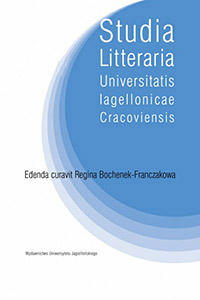Раскольников на Сенной площади. О происхождении ключевого сюжетного мотива Преступления и наказания Ф.М. Достоевского
Raskolnikov in Sennaya Square. On the Origin of the Key Plot Motifs of the F.M. Dostoyevsky’s Crime and Punishment
Author(s): Wasilij Georgievich SzczukinSubject(s): Russian Literature, 19th Century, Theory of Literature
Published by: Wydawnictwo Uniwersytetu Jagiellońskiego
Keywords: F.M. Dostoevsky; novel Crime and Punishment; the Petersburg text; mythopoetics; intertextuality;
Summary/Abstract: In the first part of the novel Crime and Punishment, waking up after sleeping on exhausted horses, Raskolnikov refuses to commit the murder of Alyona Ivanovna, but then for some unknown reason goes by the house on Sennaya square. This inexplicable act was fatal for him: on the square, he learned that tomorrow Alyona will be home alone and took the final decision to put into action the axe. The article substantiates the assumption that the “topographic error” of the hero is closely connected with the mythical reputation of the Haymarket and nearby alleys as places where the devil confuses people the right way. More Alexander Pushkin (Secluded Cabin on Vasilievsky Island) tied the motif of wandering through the labyrinth streets of St. Petersburg with the intervention of the devil, and Nikolai Gogol (Diary of a Madman) put the phrenetic Poprishchin in the Zverkov’s house, in the Stolyarny lane, near Kokushkin bridge. In the same Stolyarny lane Lermontov places the house titular counselor Stoss of the eponymous story. Right there on the corner of the Sredniaya Meshchanskaya street and Stolyarny lane, settled Dostoevsky and Raskolnikov. The hero of the story Stoss, the painter Lugin, wandering in these places, following the absurd instructions of the boy, offering him to go to the roundabout, just as it does Raskolnikov, going home through Sennaya square. Thus, Dostoevsky accurately taken into account the literary reputation of this place that goes back to Gogol and Lermontov.
Journal: Studia Litteraria Universitatis Iagellonicae Cracoviensis
- Issue Year: 11/2016
- Issue No: 3
- Page Range: 167-174
- Page Count: 8
- Language: Russian

